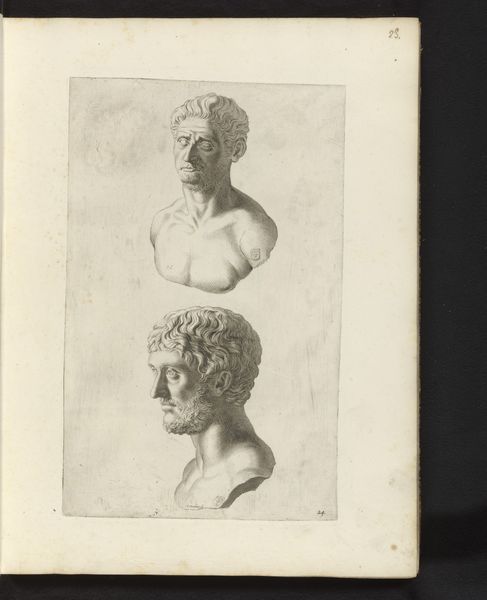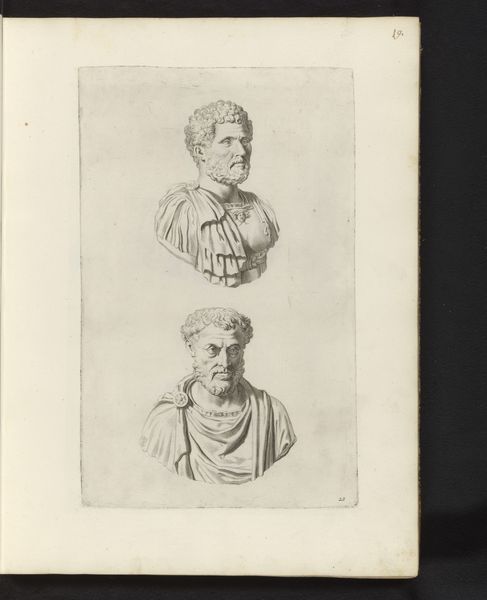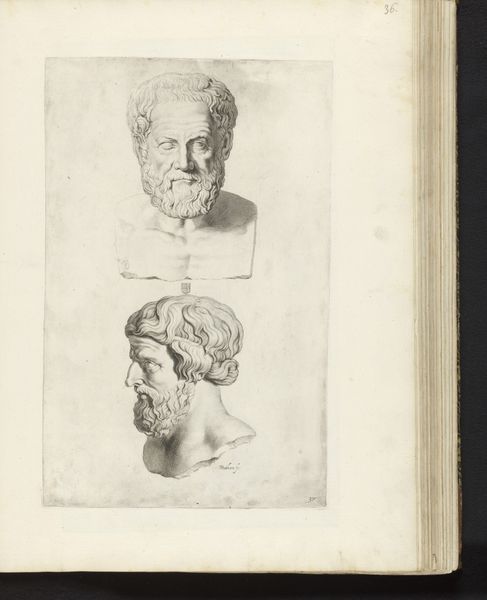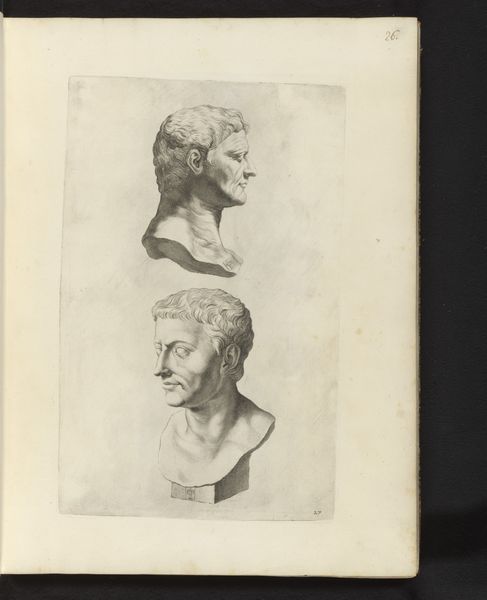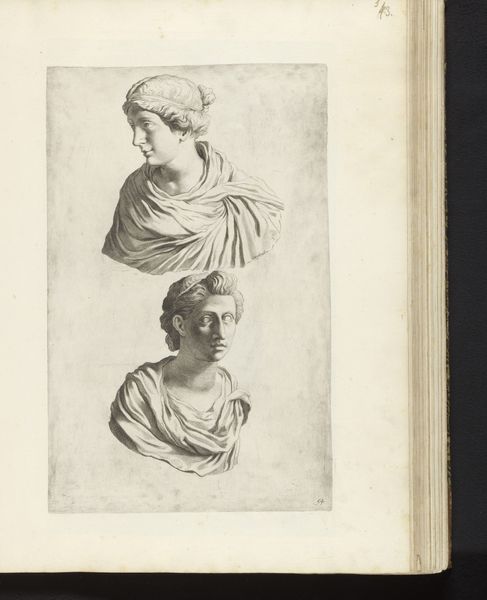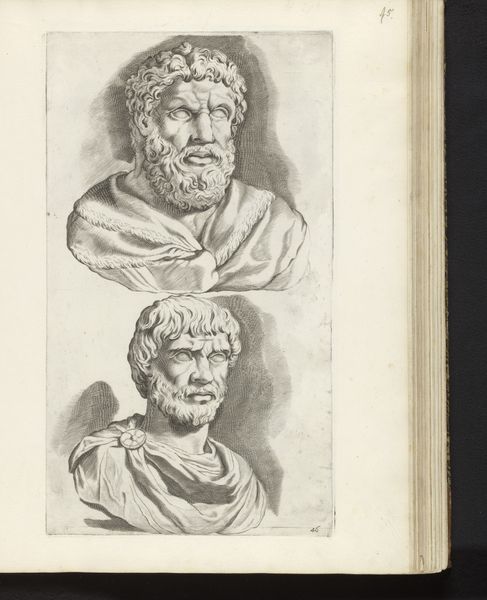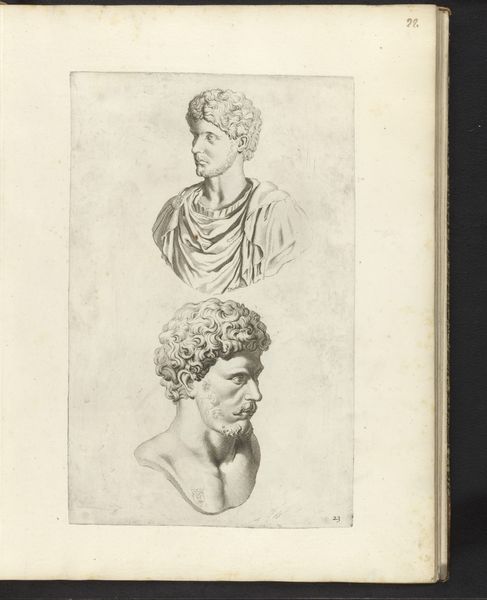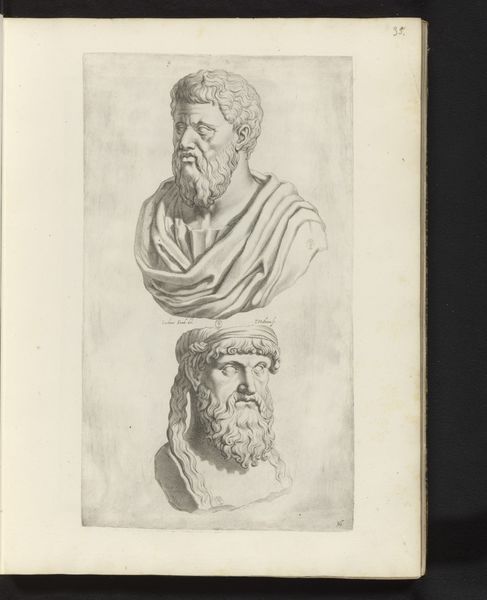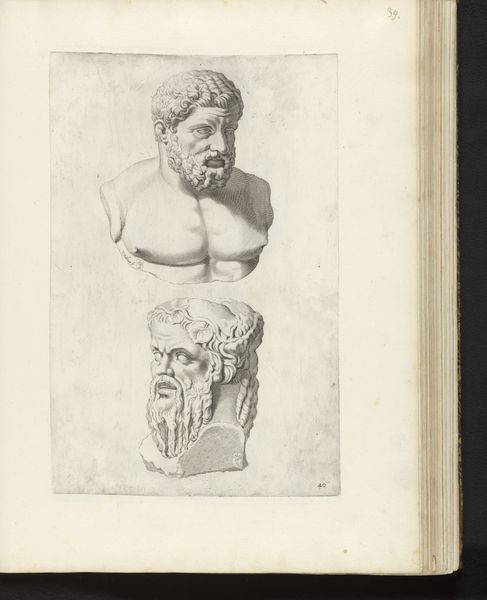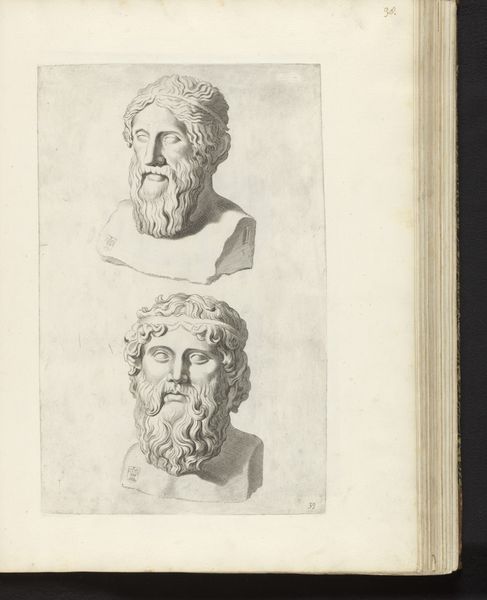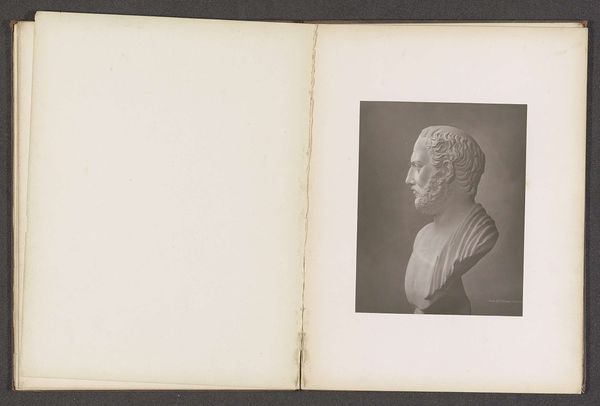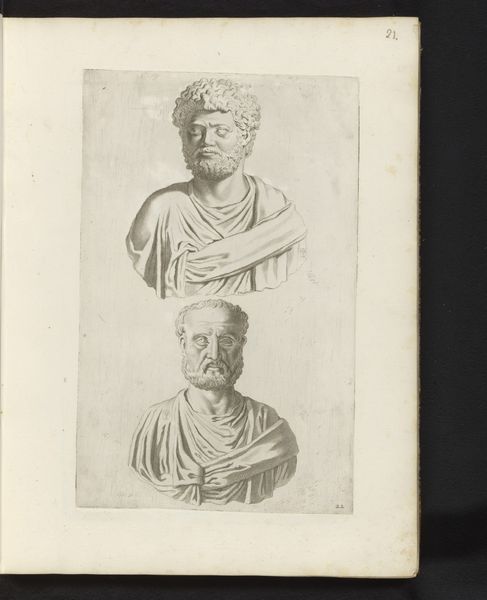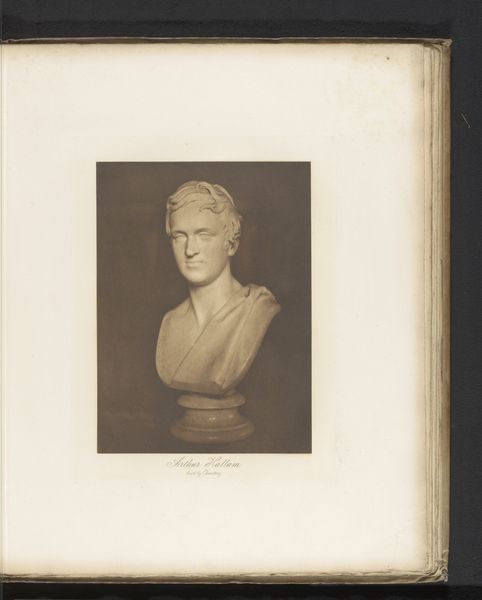
drawing, pen
#
portrait
#
pencil drawn
#
drawing
#
aged paper
#
toned paper
#
light pencil work
#
baroque
#
pencil sketch
#
sketch book
#
classical-realism
#
figuration
#
personal sketchbook
#
sketchbook drawing
#
pen
#
pencil work
#
academic-art
#
sketchbook art
Dimensions: height 372 mm, width 236 mm
Copyright: Rijks Museum: Open Domain
Editor: So, this drawing by Theodor Matham, "Bustes van Plato en Socrates," from the mid-17th century… It's rendered in pen and pencil, and the paper seems quite aged. I'm struck by its quiet intensity. How would you interpret the social implications of immortalizing these philosophers in this way, especially in this period? Curator: It's interesting to consider this drawing in the context of the 17th century. Matham's decision to depict Plato and Socrates speaks volumes about the enduring influence of classical thought on European intellectual life. The rise of humanism during the Renaissance positioned classical antiquity as a moral and cultural guidepost, so to create this image reinforced the importance of these figures within the European culture. Do you notice the visual style and how it may emphasize the status of these intellectuals? Editor: Yes, the classical-realism style certainly elevates them. Was there also something inherently political about choosing these specific figures? I mean, Socrates, in particular, challenged authority. Curator: Precisely. Socrates's emphasis on questioning and independent thinking resonated with certain strands of Enlightenment thought, even at this earlier stage. While Matham likely intended to create idealized portraits of philosophical icons, the very act of celebrating independent thought had political undertones. Consider the institutions which would then collect drawings of philosophers for academic purposes. Editor: So, these portraits aren't just aesthetic exercises, but affirmations of certain intellectual and potentially even political values. Did the patronage system play a role? Curator: Absolutely. Understanding who commissioned or collected works like this is crucial. Were they destined for a public institution, a private collection of a learned individual, or perhaps even used as models for further artistic production? The context shapes the meaning. Editor: That sheds a lot of light on the choices Matham might have made. Thanks! I’ll definitely keep the political undercurrents in mind as I study this work. Curator: Indeed. Art like this acts as a visual and ideological conduit between historical periods and political contexts, encouraging us to rethink the assumed association of art with purely aesthetic or beautiful values.
Comments
No comments
Be the first to comment and join the conversation on the ultimate creative platform.

